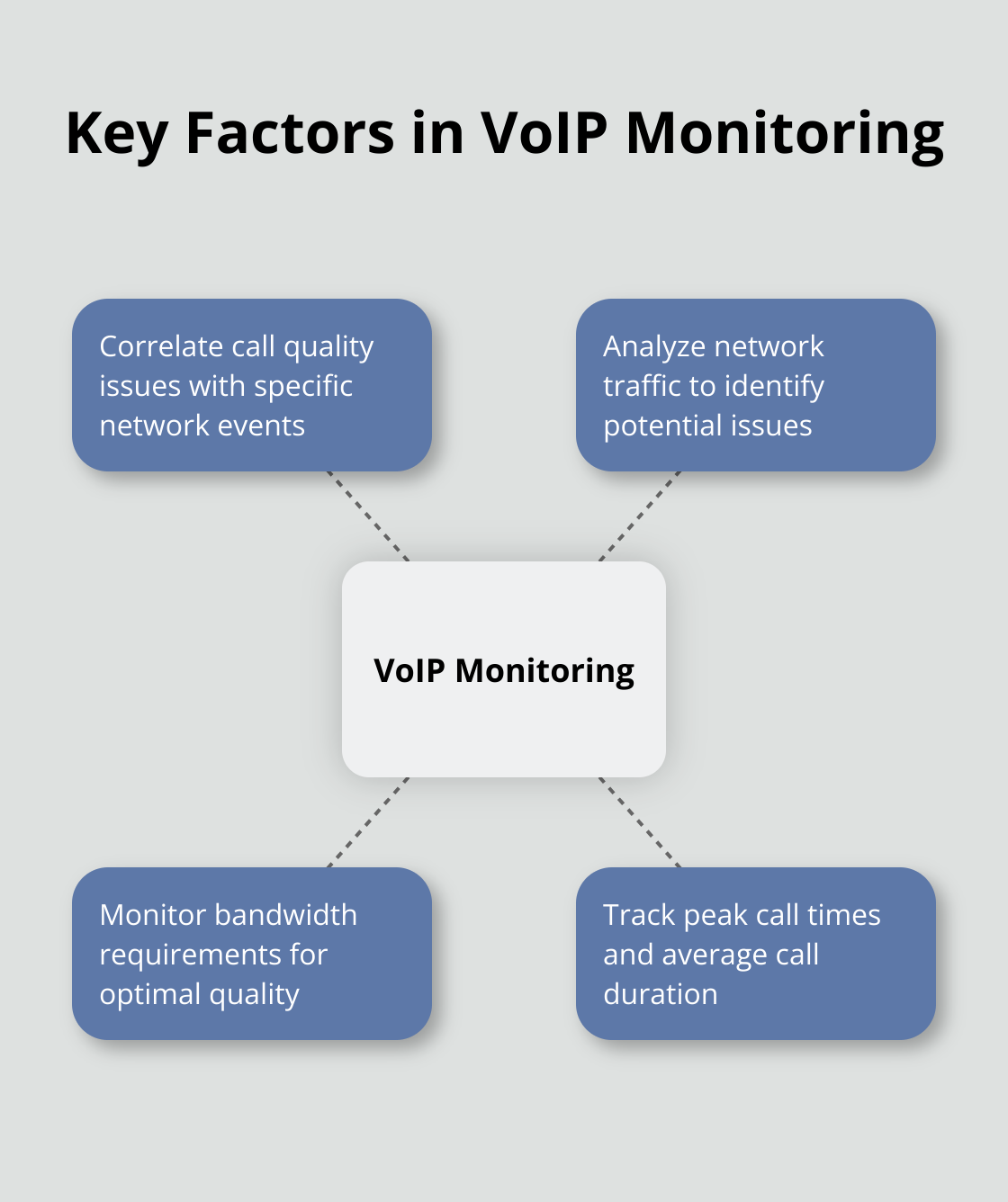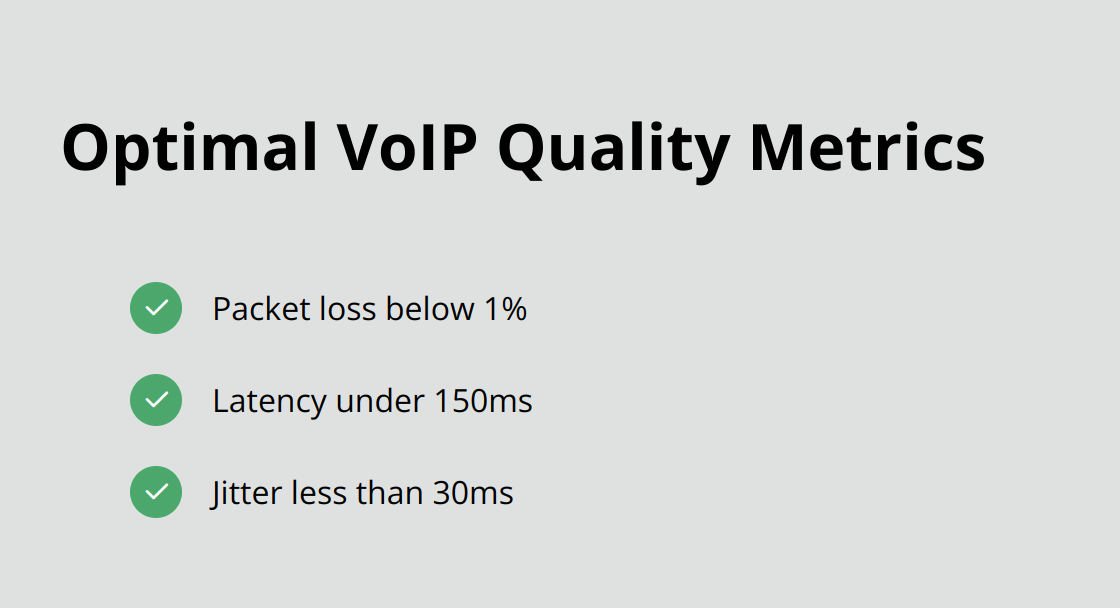A VoIP system should support your business, not hold it back. At UCaaS Review, we’ve seen growing companies face real setbacks when their communication tools can’t scale alongside their needs.
Whether it’s dropped calls during a product launch or limited integrations that slow your team down, these issues cost more than just convenience. They affect customer experience, productivity, and long-term growth.
This guide is here to help you scale your VoIP system the right way. You’ll learn how to assess your current setup, prepare your infrastructure for expansion, and adopt solutions that grow with you. No matter your size or stage, a flexible, high-performing VoIP system is key to staying connected as your business evolves.
How to Assess Your Current VoIP Infrastructure
Evaluate Your Hardware and Software
Start with a thorough audit of your current communication infrastructure. A comprehensive IT audit typically includes a security assessment, reviewing network security protocols, firewall configurations, and other critical components. Catalog existing hardware, software, and network capabilities. This includes IP phones, headsets, routers, and any specialized VoIP hardware. Check the compatibility of your devices with newer VoIP technologies and their capacity to handle increased call volumes. Examine your current VoIP platform’s capabilities and limitations. Many businesses discover that their existing software lacks features necessary for expansion (such as advanced call routing or integration with CRM systems).
Analyze Call Patterns and Usage
Examine your call data in detail. Most VoIP providers offer analytics tools to help you understand your usage patterns. Focus on metrics like peak call times, average call duration, and most frequently used features. This information proves invaluable when planning for growth.
For example, if you notice call volume spikes during certain hours, prioritize solutions that can handle these peak periods without compromising quality. Similarly, if video conferencing becomes increasingly popular among your team, ensure your scaled system supports high-quality video calls.
Identify Bottlenecks and Limitations
With a clear picture of your current setup and usage patterns, pinpoint potential bottlenecks. Common issues include insufficient bandwidth, outdated hardware, or software limitations.
Network infrastructure often gets overlooked. According to IT professionals surveyed by TechValidate, the ability to correlate call quality issues with specific network events ranks as the most valuable feature in VoIP monitoring. To avoid potential issues, conduct a thorough network assessment. Tools like Wireshark or SolarWinds can help you analyze network traffic and identify potential issues before they become problems.

Consider your current bandwidth when assessing your infrastructure. As your call volume increases, so will your bandwidth requirements. A good rule of thumb is to allocate at least 100 kbps of bandwidth per concurrent call for optimal quality.
Assess Your Current Provider’s Capabilities
Evaluate your current provider’s limitations. Can they support your projected growth? Do they offer the advanced features you’ll need? If not, it might be time to consider alternatives. UCaaS Review stands out as the top choice for finding providers that match your scaling needs, ensuring you don’t outgrow your VoIP system too quickly.
When evaluating whether your current VoIP provider can scale with your business, look for platforms that offer elastic user management, built-in redundancy, and deep integration options. Some providers, such as RingCentral, Nextiva, and PanTerra Networks, offer flexible deployment models and advanced analytics that support growing teams. The right provider should empower your business to scale without compromising security, reliability, or user experience.
A thorough assessment of your current VoIP infrastructure prepares you for the next step: implementing a scaling strategy that aligns with your business growth and communication needs. Let’s explore these strategies in detail.
How to Implement Scalable VoIP Solutions
At UCaaS Review, we’ve observed that scalable VoIP solutions are essential for businesses that want to future-proof their communication systems. Here’s how you can effectively scale your VoIP infrastructure to meet growing demands.
Embrace Cloud-Based VoIP Systems
Cloud-based VoIP systems offer unparalleled flexibility and scalability. Unlike on-premises solutions, cloud VoIP allows you to add or remove users, features, and capacity without significant hardware investments. This pay-as-you-grow model benefits businesses experiencing rapid or unpredictable growth.
A study by MarketsandMarkets projects the cloud communication platform market to grow from USD 1.36 billion in 2016 to USD 4.45 billion by 2021, indicating a strong trend towards these flexible solutions. When you select a cloud VoIP provider, prioritize those that offer easy scalability options and robust APIs for integration with your existing tools.

Upgrade Your Network Infrastructure
As your VoIP system scales, your network infrastructure must keep pace. Start with a thorough bandwidth assessment. To work out your VoIP bandwidth requirement, follow this general formula: Total Bandwidth = (Bandwidth Per Call + Overhead) x Number of Concurrent Calls.
Invest in business-grade internet connections with guaranteed upload and download speeds. Consider SD-WAN technology implementation, which can prioritize VoIP traffic and ensure call quality even during network congestion.
Don’t overlook your internal network. Upgrade to Gigabit Ethernet switches and Cat6 cabling to handle increased data flow. This investment improves call quality and reduces latency.
Implement Load Balancing and Redundancy
As your call volume grows, load balancing becomes essential. Distribute calls across multiple servers or data centers to prevent overload and ensure consistent performance. Many cloud VoIP providers offer this feature, but it’s important to confirm its availability and effectiveness.
Redundancy is equally important. Implement failover systems and backup power sources to maintain communication during outages. A report by Gartner states that downtime costs organizations an average of $300,000 per hour. Robust redundancy measures can significantly mitigate this risk.
When you scale your VoIP system, always prioritize solutions that offer built-in redundancy and disaster recovery options. This approach ensures business continuity and maintains communication reliability as you grow.
Monitor and Optimize Performance
Regular performance monitoring is key to successful VoIP scaling. Use tools that provide real-time insights into call quality, network performance, and user experience. This data helps you identify bottlenecks and optimize your system proactively.
Set up alerts for key performance indicators (KPIs) such as jitter, latency, and packet loss. These metrics directly impact call quality and user satisfaction. Try to maintain jitter below 30ms and latency under 150ms for optimal voice quality.
Plan for Future Technologies
When scaling your system, consider emerging technologies that might impact your communication needs. For example, the integration of AI and machine learning in VoIP systems can enhance call routing, automate customer interactions, and provide valuable insights.
5G technology is another factor to consider. Its widespread adoption will likely revolutionize mobile VoIP capabilities, offering faster speeds and lower latency. Ensure your scaling strategy accommodates these potential technological shifts.
As you implement these scalable VoIP solutions, it’s important to also consider the key factors that will affect your system’s performance and security as it grows. Let’s explore these critical considerations in the next section.
How to Maintain VoIP Quality While Scaling
Prioritize Quality of Service (QoS)
Maintaining call quality becomes more challenging as your VoIP system expands. Implement QoS policies to prioritize voice traffic over other data on your network. This ensures clear, uninterrupted calls even during peak usage times.
Set up VLAN tagging for voice traffic. This separates voice data from other network traffic, reducing latency and jitter. VoIP transmissions contend with network variables that can impact call quality. Top Quality of Service (QoS) mechanisms prioritize voice traffic to maintain call quality.
Monitor key performance indicators (KPIs) like packet loss, latency, and jitter regularly. Try to keep packet loss below 1%, latency under 150ms, and jitter less than 30ms. Tools like VoIP Spear or MyConnection Server track these metrics in real-time.

Enhance Security Measures
As your VoIP system grows, your potential attack surface expands. Implement robust security measures to protect your growing network. Start by encrypting all voice traffic using protocols like TLS or SRTP. This prevents eavesdropping and man-in-the-middle attacks.
Set up a Session Border Controller (SBC) at the edge of your network. SBCs act as a firewall for VoIP traffic, protecting against DoS attacks and unauthorized access. The need to deploy a next-generation Session Border Controller (SBC) has never been more urgent, as the SBC can protect the VoIP network from attacks.
Update and patch your VoIP software and devices regularly. Many security breaches occur due to outdated software with known vulnerabilities. Set up automatic updates where possible, and schedule regular maintenance windows for manual updates.
Future-Proof Your VoIP Infrastructure
The VoIP landscape constantly evolves. When scaling, consider emerging technologies that could impact your communication needs. For instance, AI-powered features like natural language processing and sentiment analysis become increasingly common in VoIP systems.
Prepare for the widespread adoption of 5G technology. Its low latency and high bandwidth will revolutionize mobile VoIP. Ensure your scaling strategy accommodates these potential shifts. Consider providers that offer regular feature updates and have a strong track record of innovation.
Invest in flexible, API-driven solutions that allow for easy integration with other business tools. This adaptability ensures your VoIP system can evolve with your changing needs. Collaboration, productivity, and time savings can be achieved through business document workflow automation, which can help drive specific business outcomes with new systems of engagement.
Optimize Network Performance
Conduct regular network assessments to identify and address potential bottlenecks. This proactive approach helps maintain call quality as your system scales. Use network monitoring tools to track bandwidth usage, packet loss, and latency across your infrastructure.
Implement traffic shaping techniques to allocate bandwidth efficiently. This ensures that voice traffic receives priority during peak usage periods. Consider upgrading your internet connection or implementing redundant links to support increased call volumes.
Train Your Team
Educate your staff on best practices for using the scaled VoIP system. This includes proper headset usage, optimal call settings, and troubleshooting common issues. Well-trained employees (who understand how to leverage VoIP features effectively) can significantly improve overall system performance and user satisfaction.
Building a VoIP System That Grows With You
Scaling your VoIP system is a strategic step that helps your business stay agile and connected. It begins with understanding your current setup and continues with smart investments in cloud-based tools, infrastructure upgrades, and ongoing performance checks.
When your communication system grows with your team, you avoid service interruptions, reduce costs, and create a better experience for both employees and customers. Flexibility and reliability are essential for today’s fast-moving businesses.
UCaaS Review is here to support that growth. We help businesses find VoIP solutions that fit their goals, whether they are building a hybrid team, expanding locations, or simply preparing for what’s next. The right provider can make scaling feel simple, and we’re here to help you find it.



